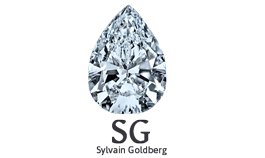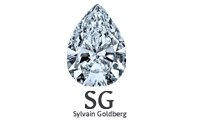It’s both comforting and depressing to realize that most people around the world feel exactly the same way about 2020: Thank. God. It’s. Over.
And yet for jewelers, the year was marked by some unexpected ambivalence. As the pandemic raged on, people in lockdown ceased spending on travel and experiences, and turned their sights on buying meaningful gifts of enduring value. As a result, jewelry sales remained resilient and, in some cases, even soared.
Deciphering the contradictions of the post-COVID economy will be even more challenging than interpreting the market’s mixed signals in 2020. Below, we’ve put together a guide to the five major trends that will change the way jewelry is made, bought, and sold in the year, and decade, to come. Brace yourselves.
The recovery will be digital
It should come as no surprise that online sales were retailers’ saving grace this past year, and not just during the spring lockdowns. Mastercard SpendingPulse reported that while total holiday retail sales from Oct. 11 through Dec. 24, excluding automotive and gasoline, increased 3% compared to 2019, online sales grew a staggering 49%.
If you remember one thing about the future of selling jewelry, it is the importance of crafting a digital-first strategy. Over the course of the past year, we heard from retailers who began the year as traditional brick-and-mortar holdouts and quickly transformed into online evangelists once the pandemic took hold. We spoke to one store owner who began a series of pre-owned watch and jewelry auctions over Zoom. Many others added chat functionality to their websites, or learned how to connect remotely with clients using video calls.
Embracing a digital-first worldview, however, does not mean giving up on brick-and-mortar. A well-executed omnichannel approach—which allows for that by-now ubiquitous “buy online, pick up in store” option—is the only way jewelers will survive in the new year and beyond. Resistance really is futile.
Jewelry style will remain low-key—but once we are safely out of the COVID woods, all bets are off
As the virus continues to plague our communities, social distancing mandates will ensure that many workers remain remote. What’s interesting, however, is how many pundits expect the work from home (WFH) trend—or its more exciting cousin, work from anywhere (WFX)—to persist long after the final lockdown ends.
That means we can count on the prevailing jewelry aesthetic, at least for the first half of 2021, to be low-key, with a focus on simpler, more contemporary designs that can be worn at home. “Imagine daytime couture meets loungewear” is how the Hong Kong private jeweler Nicholas Lieou described it.
The focus on shoulder-up adornment—in keeping with our new Zoom-ready work lives—will, of course, be a key trend, as will the bright colors and optimistic motifs that began trending in the second half of 2020.
But the future of jewelry style isn’t all modesty and restraint. Many forecasters are suggesting that once the vaccine is widely available, the tech breakthroughs of the past year—including everything from advancements in AI to SpaceX’s successful rocket launch—will fuel a boom in productivity that will juice the economy and have us all dancing on tables. Don’t be surprised to see a rush on long, flapper-style pearl necklaces, oversize cocktail rings, and jewels that capture the Roaring ’20s zeitgeist.
The pre-owned jewelry category is ripe for the picking
No one disputes the strength of the pre-owned watch market. Valued (conservatively) at $15 billion worldwide, the category had a banner year in 2020. Consider this: according to the pre-owned watch retailer WatchBox, the secondary market price for the Rolex Daytona reference 116500LN (retail: $13,500) in November 2019 was $24,000. It dipped slightly in March, to $20,000, and then vaulted to $28,000 in November.
The jewelry industry is ripe for a similar phenomenon, but it requires a more formalized approach to the pre-owned category. Right now, the secondhand luxury business belongs to a handful of e-commerce resale pioneers such as the RealReal and 1stDibs, neither of which are jewelry specialists.
A new player in the space, London-based Omneque, aims to be an online destination for “rigorously authenticated antique, vintage, and pre-owned jewelry.” But as of now, there is plenty of room for competing players.
Augmented reality will become mainstream, with AI not far behind
If you follow jewelers Delfina Delettrez, Lydia Courteille, or Emily P. Wheeler on Instagram, you may have already “tried on” their earrings or played around with their designs. Thanks to Ukraine-based augmented reality specialist Atelar, which develops AR filters using Facebook’s Spark AR Studio software, the designers all began to experiment with AR during the pandemic.
The AR experiences are still, mostly, novelties—fun to try and share—but it remains to be seen whether they can convert browsers to buyers. There are, however, promising signs that the technology is on the verge of going mainstream. In September, Facebook CEO Mark Zuckerberg posted a trailer to YouTube giving the world a sneak peak of the smart glasses his company is developing through its new Reality Labs division.
“I am excited to share that we have formed a multiyear partnership starting with building and releasing our first pair of smart glasses next year,” Zuckerberg said. “They’re going to be the next step on the road to augmented reality glasses, and they look pretty good, too.”
On the heels of AR is the industry’s broader acceptance of artificial intelligence, which is already being used to help jewelers design and manufacture jewelry more efficiently, grade diamonds more intelligently, ship jewelry more cost-effectively, and do any number of other jewelry-related tasks better. To prep yourself for the coming machine-learning revolution, may we suggest a marathon movie session with our favorite cinematic renditions of AI: Her, Ex Machina, and, of course, 2001: Space Odyssey?
Companies will be held accountable
The racial reckoning that began last May, following the killing of George Floyd, prompted an industry-wide conversation about diversity, racism, and white privilege. Now that the calendar has turned, companies that pledged to do better in 2020 will have to demonstrate how they’ve changed, or risk being called out on social media for their inaction.
On June 2, 2020, for example, Cartier posted a black square to its Instagram feed accompanied by the following statement: “As a Maison, our creativity is nurtured and inspired by the diverse cultures of the world. We find our own richness in this diversity, and we stand firmly against all forms of racism directed toward the Black Community. At this moment we are examining our own company to identify actions we can take that will result in real change. #BlackoutTuesday.”
Accountability will be a guiding force in 2021—and not just on issues that affect Black communities. Companies that have committed to corporate social responsibility and ethical sourcing will be asked to prove the vows they made in 2020 were more than platitudes. And while there are more constructive ways to deal with inaction than social media shaming, “cancel culture”—or the practice of withdrawing support from companies or people that have done something considered offensive or objectionable—is not likely to disappear anytime soon.







